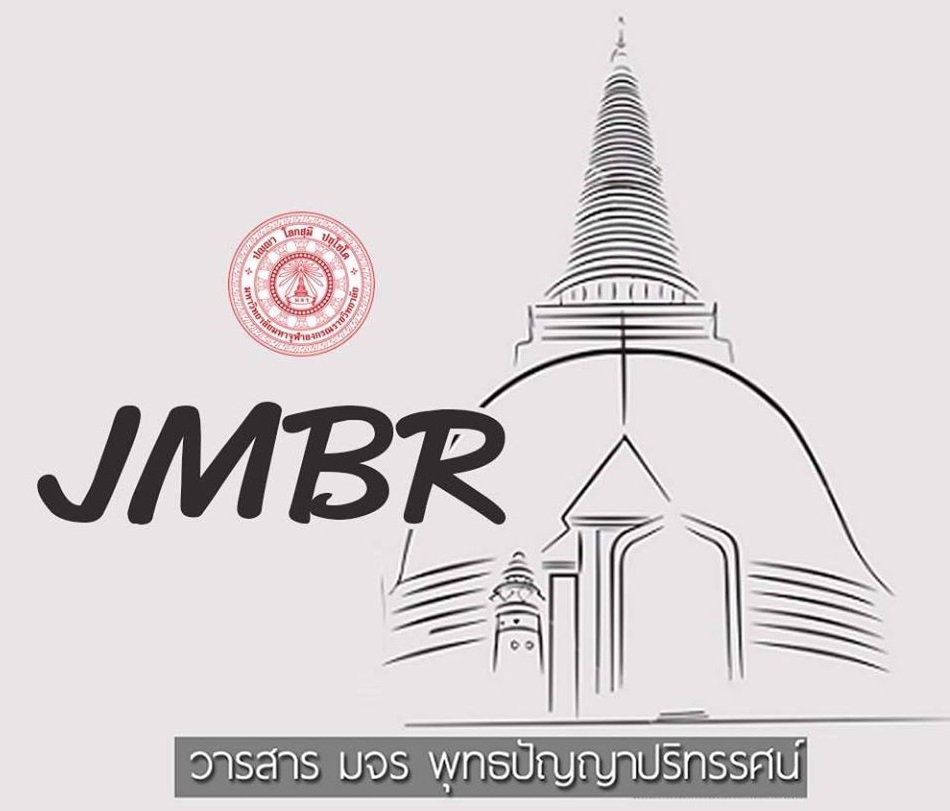BUDDHIST METHODS FOR BEHAVIOURAL DEVELOPMENT OF SECONDARY SCHOOL
Keywords:
BUDDHIST METHODS, BEHAVIOURAL, DESIRABLE ATTRIBUTES, CHARITA 6 TYPE, SATIR, GUILDANCE ACTIVITYAbstract
This research has 3 objectives as follows:
for study negative behavior flaws or habits that should be improved , to create an integrated Buddhist teaching model that is consistent with the character Or learning characteristics of learners following modern teaching practices , to present undesirable characteristics analysis And the application of a Buddhist teaching model integrated with modern teaching science, this study used mixed methods research by using quantitative research methods. To expand the results of qualitative research methods the research results can be summarized as follows
1) Research results on negative behavior Flaws or habits that should improve of each person's behavior by using a test to analyze and evaluate the results of personality symptoms. Negative behaviors exist in each individual of the six attitudes, where, if any person has a dominant spirit or core. They tend to have obvious negative behaviors, have a lot of ego, or have a high degree of disadvantage. Any person who has a primary and secondary mindset at a similar rate There will be flaws or negative behaviors in both of these perceptions, but in the behavior that is not very extreme, such as a person with a master mind, a Master's mind most outstanding it often has disadvantages, including willful, often angry at a higher rate a person with a master of spirits and raks, without being the most outstanding.
2) The research results of an interesting integrated Buddhist teaching model in accordance with the character or the learning characteristics of learners that are different according to modern teaching practices From the analysis, it was found that the integrated Buddhist teaching model is the combination of Buddhist teaching methods of the Lord Buddha with the learning characteristics of the six-minded people who are satisfied with learning and open-minded to listen differently.
3) Research results in presenting the analysis results of adverse characteristics. And their application was consistent with the Buddhist teaching model integrated with modern teaching science. The behavioral analysis program based on the concepts of Satir and Jarit 6 aims to reflect the good self and the points for improvement. To create appropriate teaching habits and guidelines development plan Develop a new body of knowledge based on Buddhist integration and new forms of activities Obtained from this research is the "HABITS" model.
References
๑. ภาษาไทย
ก. ข้อมูลปฐมภูมิ
มหาวิทยาลัยมหาจุฬาลงกรณราชวิทยาลัย. พระไตรปิฎกภาษาไทย. ฉบับมหาวิทยาลัยมหาจุฬาลงกรณราชวิทยาลัย. กรุงเทพมหานคร : โรงพิมพ์มหาจุฬาลงกรณราชวิทยาลัย ๒๕๓๙.
ข. ข้อมูลทุติยภูมิ
(๑) หนังสือ :
หลักสูตรแกนกลางการศึกษาขั้นพื้นฐาน พุทธศักราช ๒๕๕๑. กรุงเทพมหานคร : ชุมนุมสหกรณ์การเกษตรแห่งประเทศไทย, ๒๕๕๒
กิตติชัย สุธาสิโนบล. การจัดการเรียนการสอนแบบพุทธะเพื่อพัฒนาคุณธรรมจริยธรรมสำหรับนักเรียน. กรุงเทพมหานคร : บริษัท คอมเมอร์เชียล เวิลด์ มีเดีย จำกัด, ๒๕๕๘.
พระพรหมคุณาภรณ์ (ป.อ. ปยุตโต), พุทธวิธีในการสอน, พิมพ์ครั้งที่ ๑๘, กรุงเทพมหานคร : บริษัทพิมพ์สวย จำกัด, ๒๔๔๖,
(๒) วิทยานิพนธ์ / สารนิพนธ์ / บทความวิจัย
ศรีไพร จันทร์เขียว. “การจัดการเรียนรู้พระพุทธศาสนาโดยพุทธวิธีบูรณาการ” วิทยานิพนธ์พุทธศาสตรดุษฎีบัณฑิต. บัณฑิตวิทยาลัย : มหาวิทยาลัยมหาจุฬาลงกรณราชวิทยาลัย, ๒๕๕๘.
พระครูสิริปัญญาภรณ์ (สุธีร์ วิสุทฺโธ/ตันโห). “การศึกษาวิเคราะห์พุทธวิธีการสอนพระราหุล”, สารนิพนธ์พุทธศาสตรดุษฎีบัณฑิต. บัณฑิตวิทยาลัย : มหาวิทยาลัยมหาจุฬาลงกรณราชวิทยาลัย, ๒๕๕๗.
พระทะนง ชยาภรโณ (วงค์สายะ). “การเรียนการสอนตามแนววิถีพุทธชั้นมัธยมศึกษาปั้ ๑ โรงเรียนน้ำดิบวิทยาคม อำเภอป่าซาง จังหวัดลำพูน”. วิทยานิพนธ์พุทธศาสตรมหาบัณฑิต. บัณฑิตวิทยาลัย : มหาวิทยาลัยมหาจุฬาลงกรณราชวิทยาลัย, ๒๕๕๔.
พิเชษฐ ยังตรง. “กลยุทธ์การพัฒนาคุณลักษณะที่พึงประสงค์ของผู้เรียนในสถานศึกษาขั้นพื้นฐานในศตวรรษที่ ๒๑”. วิทยานิพนธ์ศึกษาศาสตรดุษฎีบัณฑิต. วิทยาลัยครุศาสตร์ : มหาวิทยาลัยธุรกิจบัณฑิต, ๒๕๖๐
พระดิฐวัฒน์ อภิวฑฺฒนธมฺโม (ทิพคุณ). “พุทธวิธีการจัดการเรียนการสอนกลุ่มสาระสังคมศึกษา ศาสนา และวัฒนธรรม ระดับชั้นมัธยมศึกษาของโรงเรียนสังกัดเทศบาลนครขอนแก่น”. วิทยานิพนธ์พุทธศาสตรมหาบัณฑิต. บัณฑิตวิทยาลัย : มหาวิทยาลัยมหาจุฬาลงกรณราชวิทยาลัย, ๒๕๖๑.
พระสรพงณ์ ปญฺญาธโร (จุลละโพธิ). “ศึกษาบุคลิกภาพตามแนวจริต ๖ ของนิสิตคณะพุทธศาสตร์ มหาวิทยาลัยมหาจุฬาลงกรณราชวิทยาลัย ห้องเรียนวัดไชยชุมพลชนะสงคราม จังหวัดกาญจนบุรี”. วิทยานิพนธ์พุทธศาสตรมหาบัณฑิต. บัณฑิตวิทยาลัย : มหาวิทยาลัยมหาจุฬาลงกรณราชวิทยาลัย, ๒๕๖๑.
(๓) ออนไลน์
โกศล อนุสิ, จริต ๖ ว่าด้วยนิสัยของคน, [ออนไลน์], แหล่งที่มา: https://www.prosofthcm.com/Article/Detail/๑๖๗๓๕.
ดร. เมธา หริมเทพาธิป, นิสัยคืออะไร, [ออนไลน์], แหล่งที่มา: https://www.gotoknow.org/posts/๖๓๗๓๑๕.
กระทรวงศึกษาธิการ. นโยบายการศึกษา. กรุงเทพมหานคร : สำนักนโยบายและแผนการศึกษาขั้นพื้นฐาน, ๒๕๕๖.
ภิญโญ สาธร. หลักการบริหารการศึกษา. กรุงเทพมหานคร : วัฒนาพาณิช, ๒๕๒๖.
รัตนะ บัวสนธ์. การวิจัยและพัฒนานวัตกรรมการศึกษา. กรุงเทพมหานคร : คําสมัย, ๒๕๕๒.
ราชบัณฑิตสถาน. พจนานุกรมฉบับราชบัณฑิตยสถาน พ.ศ. ๒๕๔๒. กรุงเทพมหานคร :
นานมีบุ๊คพับลิเคชั่น, ๒๕๔๖.
Tosi & Carroll. อ้างใน อัมพร เรืองศรี. “การพัฒนารูปแบบการพัฒนาคุณลักษณะของนักเรียนตามปรัชญาเศรษฐกิจพอเพียง”. วิทยานิพนธ์ปริญญาปรัชญาดุษฎีบัณฑิต สาขาวิชาการศึกษาและการพัฒนาสังคม. บัณฑิตวิทยาลัย : มหาวิทยาลัยบูรพา, ๒๕๕๔.
๒. ภาษาอังกฤษ
Cohen Michael. “Effective School” Accumlating Research Finding America Education. (๑๘ January-February , ๑๙๘๒), pp. ๑๓–๑๖.



